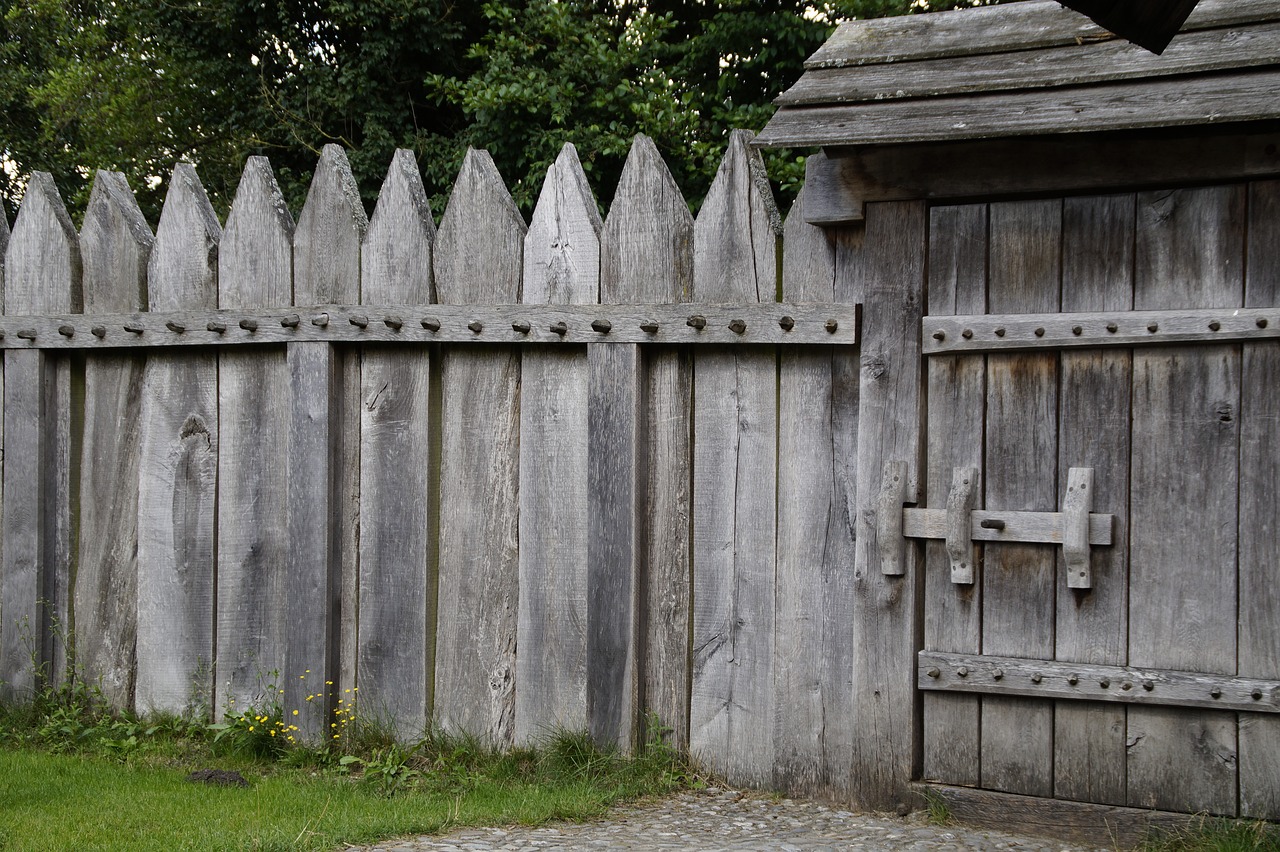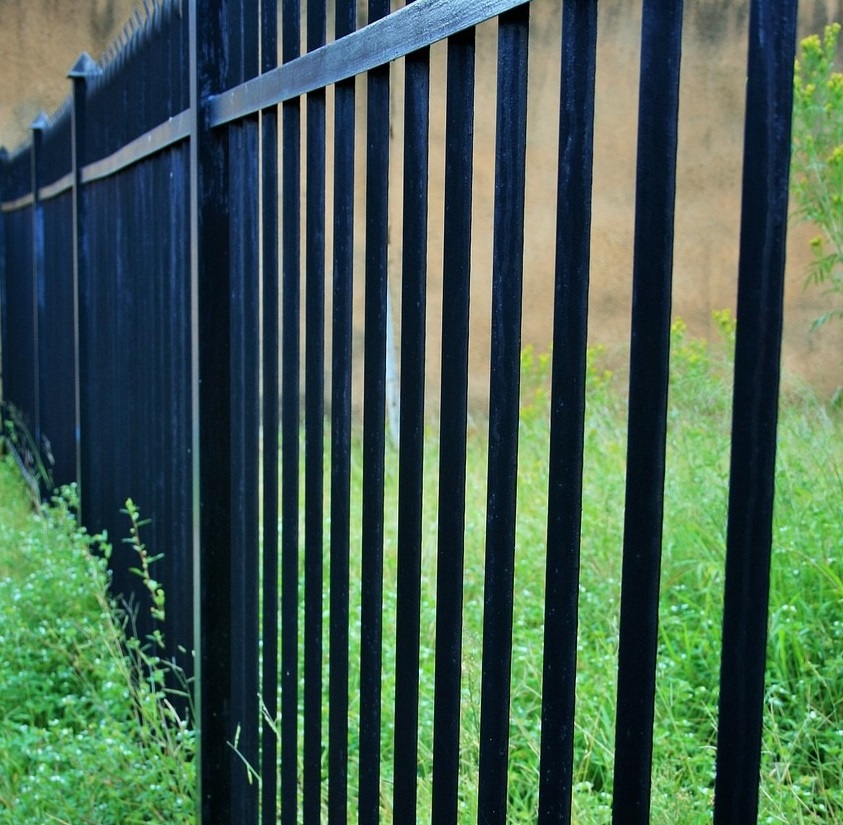Palisade

|
Contents |
[edit] Introduction
A palisade (derr. Latin ‘palus’ meaning stake) is a wall or fence typically comprising individual vertical elements bound together to form a sturdy barrier, usually for the purposes of creating a secure enclosure. Palisades are typically made from timber or metal stakes. The visual effect may be of a wall or fence, depending on whether there are gaps between the uprights.
[edit] Historical use
Historically, palisades were made from tree trunks arranged without gaps and rising up to 4m in height. The tops would usually be pointed like a pencil to create a more effective deterrent. They were quickly and easily built from materials that were often readily available. Because of this, a palisade might have been built as a temporary wall around a castle until a more permanent stone wall could be constructed.
Ancient Greek and Roman military camps would often be encircled by palisades, and such constructions were also common in medieval Germany and colonial America.
[edit] Modern variants

|
Wooden palisade fencing can resemble a traditional picket fence. However, contemporary palisades (pictured above) are just as likely to be made from steel, comprising slender uprights with gaps of less than 100mm between. They are very difficult to climb, provide high levels of security and damage resistance, and have proven popular for schools and on industrial sites.
A typical construction for galvanised steel palisade fences up to 3m high is to have two horizontal rails – an upper and lower – although for taller fences additional rails can be included at higher levels. The uprights (or ‘pales’) are typically fixed to the horizontal rails using galvanised bolts. Special uprights are set into shallow concrete pad foundations at intervals determined by the manufacturer’s specification.
Individual pales are available in various profiles such as W- or D-shaped with spiked heads to provide more effective deterrents.
[edit] Related articles on Designing Buildings
Featured articles and news
The UK's Modern Industrial Strategy: A 10 year plan
Previous consultation criticism, current key elements and general support with some persisting reservations.
Building Safety Regulator reforms
New roles, new staff and a new fast track service pave the way for a single construction regulator.
Architectural Technologist CPDs and Communications
CIAT CPD… and how you can do it!
Cooling centres and cool spaces
Managing extreme heat in cities by directing the public to places for heat stress relief and water sources.
Winter gardens: A brief history and warm variations
Extending the season with glass in different forms and terms.
Restoring Great Yarmouth's Winter Gardens
Transforming one of the least sustainable constructions imaginable.
Construction Skills Mission Board launch sector drive
Newly formed government and industry collaboration set strategy for recruiting an additional 100,000 construction workers a year.
New Architects Code comes into effect in September 2025
ARB Architects Code of Conduct and Practice available with ongoing consultation regarding guidance.
Welsh Skills Body (Medr) launches ambitious plan
The new skills body brings together funding and regulation of tertiary education and research for the devolved nation.
Paul Gandy FCIOB announced as next CIOB President
Former Tilbury Douglas CEO takes helm.
UK Infrastructure: A 10 Year Strategy. In brief with reactions
With the National Infrastructure and Service Transformation Authority (NISTA).
Ebenezer Howard: inventor of the garden city. Book review.
The Grenfell Tower fire, eight years on
A time to pause and reflect as Dubai tower block fire reported just before anniversary.
Airtightness Topic Guide BSRIA TG 27/2025
Explaining the basics of airtightness, what it is, why it's important, when it's required and how it's carried out.
Construction contract awards hit lowest point of 2025
Plummeting for second consecutive month, intensifying concerns for housing and infrastructure goals.
Understanding Mental Health in the Built Environment 2025
Examining the state of mental health in construction, shedding light on levels of stress, anxiety and depression.






















Comments
[edit] To make a comment about this article, click 'Add a comment' above. Separate your comments from any existing comments by inserting a horizontal line.